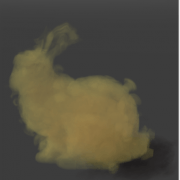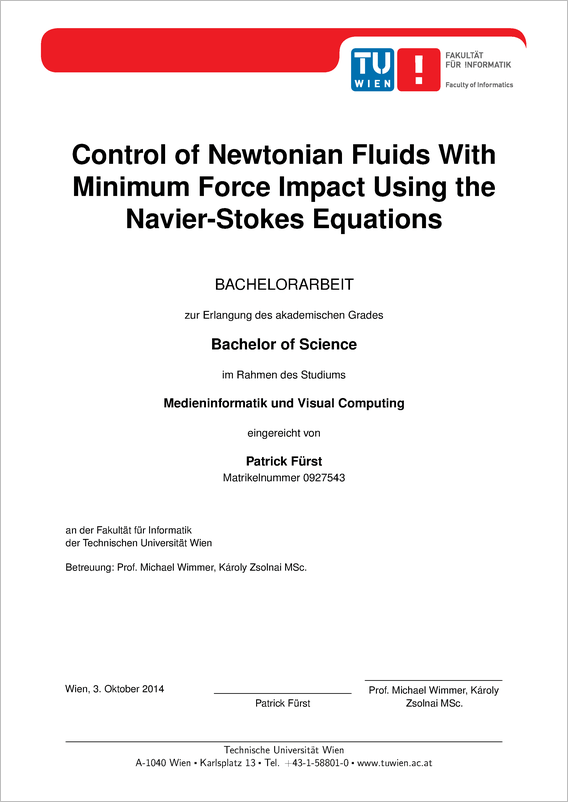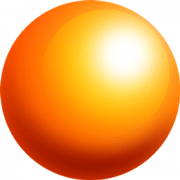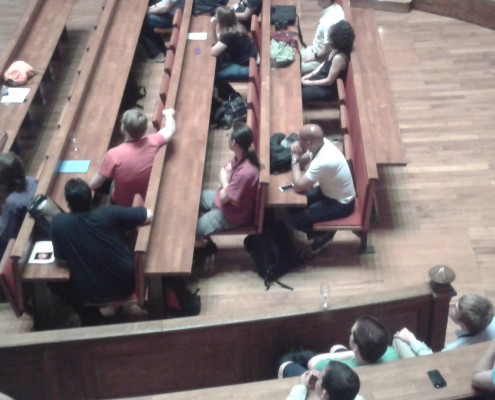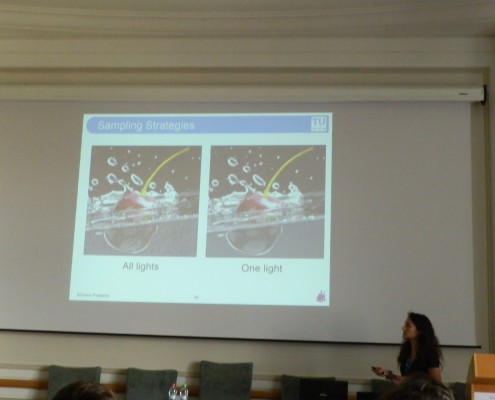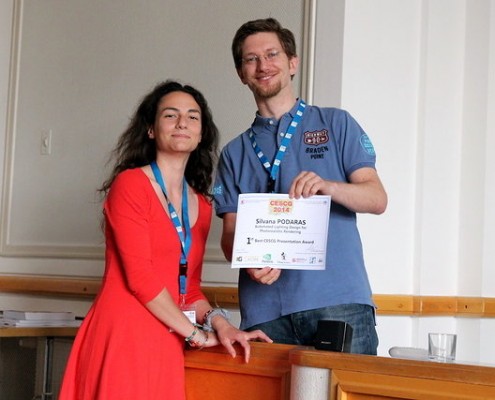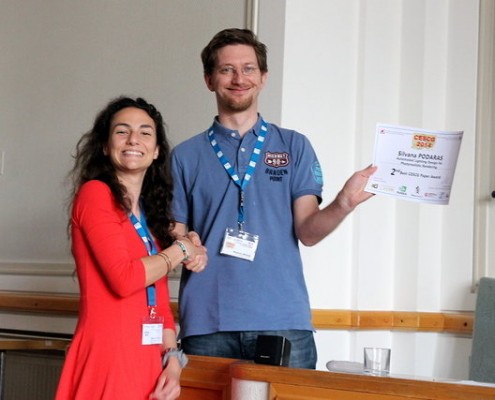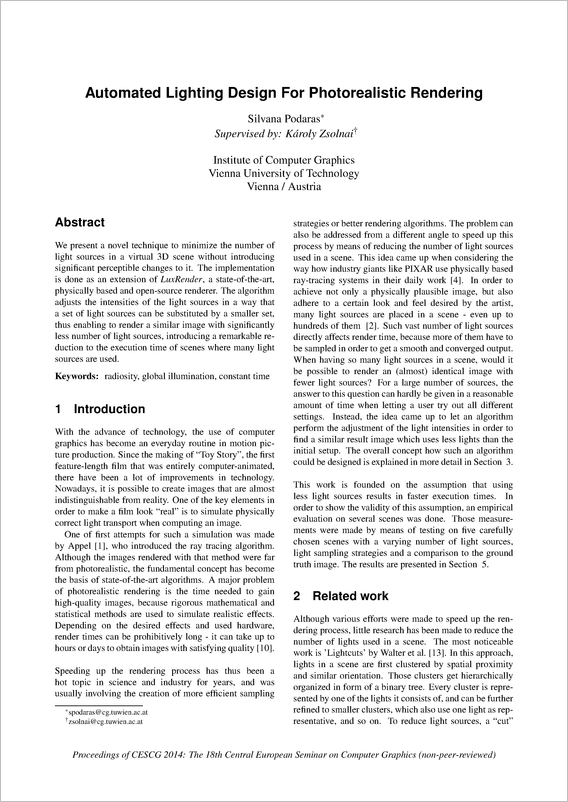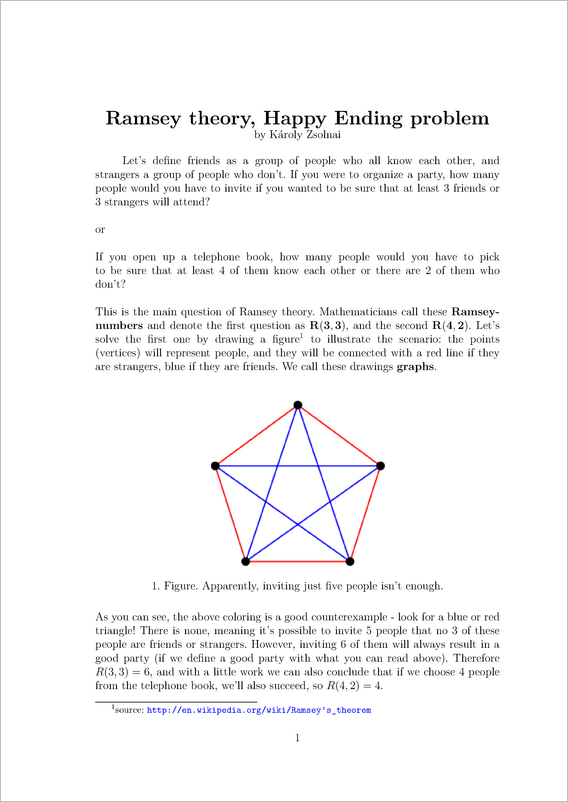Eric Veach, Matt Pharr, Greg Humphreys and Pat Hanrahan! You can watch their speeches here and here.
One could hardly overestimate the usefulness of their work. Even in the fast-moving field of rendering, Eric’s methods have been prevalent for more than one and a half decade now. In this field, we usually borrow techniques from theoretical mathematics and physics after sculpting them here and there to fit a specialized, practical application. It is commonplace that an engineer takes a technique from a mathematician to solve a practical problem, but it’s quite rare that an engineer can give back something to the mathematician. With the theory of Multiple Importance Sampling, Eric Veach made such an example, which I have found so far unprecendented. That is, among many others, indeed an inspiring achievement.
Furthermore, with the pbrt book of Matt Pharr and Greg Humphreys, we finally have an intuitive, all-encompassing resource for global illumination rendering. It’s great to see these people getting proper recognition for their achievements!

